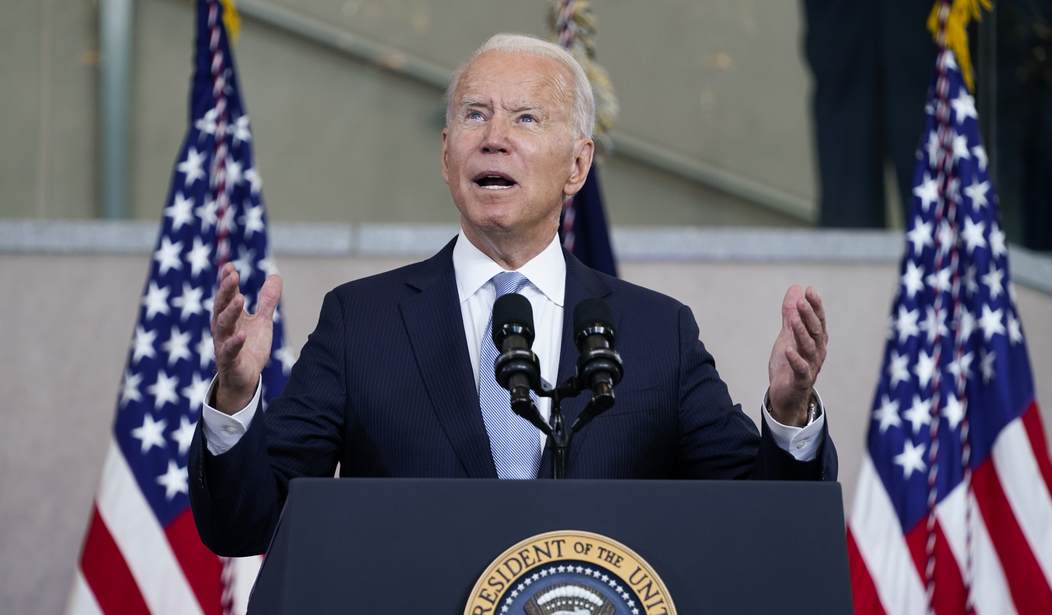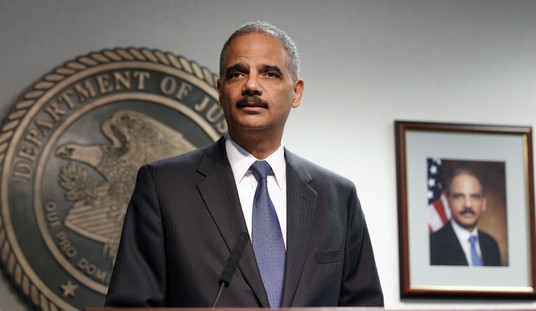Hint: It’s the same people who scoffed at the idea a year ago as conspiracy-theory nonsense. CNN reported over the weekend that an “intelligence review” has senior Biden administration officials persuaded that COVID-19 may not have had zoonotic origins after all:
Senior Biden administration officials overseeing an intelligence review into the origins of the coronavirus now believe the theory that the virus accidentally escaped from a lab in Wuhan is at least as credible as the possibility that it emerged naturally in the wild — a dramatic shift from a year ago, when Democrats publicly downplayed the so-called lab leak theory.
Still, more than halfway into President Joe Biden’s renewed 90-day push to find answers, the intelligence community remains firmly divided over whether the virus leaked from the Wuhan lab or jumped naturally from animals to humans in the wild, multiple sources familiar with the probe told CNN.
CNN being CNN, they try to cast cold water on this hypothesis while reporting that the intelligence appears to provide some support for it:
Little new evidence has emerged to move the needle in one direction or another, these people said. But the fact that the lab leak theory is being seriously considered by top Biden officials is noteworthy and comes amid a growing openness to the idea even though most scientists who study coronaviruses and who have investigated the origins of the pandemic say the evidence strongly supports a natural origin.
Current intelligence reinforces the belief that the virus most likely originated naturally, from animal-human contact and was not deliberately engineered, the sources said. But that does not preclude the possibility that the virus was the result of an accidental leak from the Wuhan Institute of Virology, where coronavirus research was being conducted on bats — although many scientists familiar with the research say such a leak is unlikely.
Unlikely? Not only is that not true, lab leaks have happened repeatedly in the past with some devastating results. Four months ago, investigative reporter Alison Young argued in USA Today that the notion that lab leaks don’t occur flies in the face of history. The original SARS outbreak came from not one but two lab leaks from supposedly secured facilities:
Yet lab accidents aren’t rare.
What’s rare are accidents causing documented outbreaks. But those have happened, including in 2004 when two researchers at a lab in Beijing unknowingly became infected with another type of SARS coronavirus, sparking a small outbreak that killed one person.
The risk that a laboratory-released virus – carried into the community by a worker who didn’t know they were infected or through the leak of infectious waste – could cause a deadly outbreak has been a growing concern for many years. …
And it’s not just in China where these accidents happen with a higher frequency than most realize. It happens in the US, too:
- At the Tulane National Primate Research Center near New Orleans, a type of deadly bacteria not found in the United States, called Burkholderia pseudomallei, escaped one of the facility’s high-security biosafety level 3 labs in 2014, infecting monkeys that lived in outdoor cages and had not been used in experiments. Federal regulators concluded the bacteria likely was carried out of the lab on workers’ contaminated clothing. The bacteria, which can cause serious illness in people and animals, can colonize soil and water in climates like Louisiana, though testing did not find evidence it had spread into the environment.
- At the University of Iowa, records showed that officials in 2014 discovered that a scientist had been conducting experiments with a genetically engineered strain of the MERS virus – which causes a deadly and contagious respiratory disease in humans – without getting approval from the university’s biosafety committee.
- Louisiana State University’s AgCenter in Baton Rouge was secretly cited by federal regulators in 2008 for serious biosafety lapses while researching Brucella bacteria, which poses a health and economic threat to livestock. Safety failures resulted in a cow in a nearby pasture – that was not involved in the experiments – becoming infected, federal records showed. LSU also was cited for sending infected cattle to a slaughterhouse where the meat was sold for people to eat.
A particularly alarming string of incidents in 2014 included the CDC potentially exposing dozens of its workers to live anthrax and also having dangerous mix-ups with specimens of Ebola virus and a deadly strain of avian influenza.
Meanwhile, in 2015 it was discovered that biological labs operated at the U.S. Army’s Dugway Proving Ground near Salt Lake City had been mistakenly shipping live anthrax spores to labs around the world for a decade, the result of faulty assumptions that the research specimens they were sharing had been effectively killed – when they could actually still grow and kill.
So, such a leak is far from “unlikely,” and it’s absurdly misleading for CNN to frame it in that manner. The absurdity increases with the well-established knowledge that the State Department had been warning about security practices in this particular lab in Wuhan for at least two years prior to the COVID-19 outbreak:
In January 2018, the U.S. Embassy in Beijing took the unusual step of repeatedly sending U.S. science diplomats to the Wuhan Institute of Virology (WIV), which had in 2015 become China’s first laboratory to achieve the highest level of international bioresearch safety (known as BSL-4). WIV issued a news release in English about the last of these visits, which occurred on March 27, 2018. The U.S. delegation was led by Jamison Fouss, the consule general in Wuhan, and Rick Switzer, the embassy’s counselor of environment, science, technology and health. Last week, WIV erased that statement from its website, though it remains archived on the Internet.
What the U.S. officials learned during their visits concerned them so much that they dispatched two diplomatic cables categorized as Sensitive But Unclassified back to Washington. The cables warned about safety and management weaknesses at the WIV lab and proposed more attention and help. The first cable, which I obtained, also warns that the lab’s work on bat coronaviruses and their potential human transmission represented a risk of a new SARS-like pandemic.
“During interactions with scientists at the WIV laboratory, they noted the new lab has a serious shortage of appropriately trained technicians and investigators needed to safely operate this high-containment laboratory,” states the Jan. 19, 2018, cable, which was drafted by two officials from the embassy’s environment, science and health sections who met with the WIV scientists.
Under these conditions, it seems a lot less unlikely that the virus escaped from WIV, no?
The most remarkable part of this report, however, is that the Biden administration has begun to embrace the possibility based on its “intelligence review.” The context shift on this came a little too fast for CNN’s reporting, and it might create cognitive dissonance elsewhere in the media as well, which has busied itself carrying China’s water while castigating anyone who mentioned the lab-leak hypothesis as a conspiracy theorist for the past 16 months. That may be why CNN’s late-Friday report didn’t get much follow-up over the weekend, except at the New York Post, which noted that the World Health Organization has double-crossed the media lately too:
The World Health Organization’s director general also engaged in an about-face this week when he acknowledged that the virus could have leaked from a lab. Tedros Adhanom Ghebreyesus now wants China to be “transparent, open and cooperate” and hand over the “raw data” that the WHO asked for at the beginning of the pandemic, he said.
Tedros told reporters Thursday that there had been “a premature push” to rule out the theory that the virus could have escaped from the government virology lab in Wuhan. He contradicted his own statements in February following a WHO mission to China that concluded that a leak from the lab was “extremely unlikely.”
“I was a lab technician myself, I’m an immunologist, and I have worked in the lab, and lab accidents happen,” Tedros said. “It’s common.”
Maybe someone should inform CNN of that fact.








Join the conversation as a VIP Member